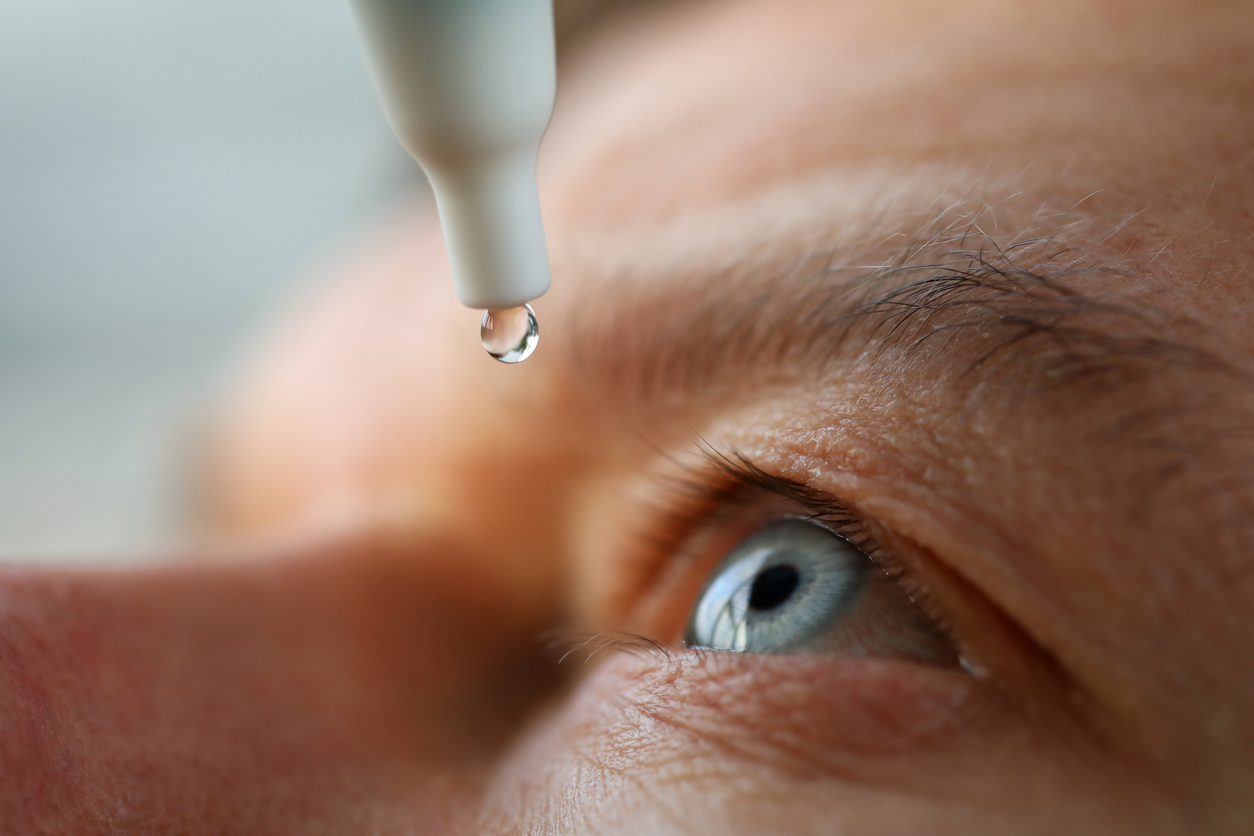Dry Eye Syndrome and Diabetes: What to Know
By Amelia Harnish
 More than half of people with diabetes are estimated to have dry eyes. Here’s why it’s important to recognize dry eye symptoms and get proper treatment.
More than half of people with diabetes are estimated to have dry eyes. Here’s why it’s important to recognize dry eye symptoms and get proper treatment.
Are your eyes bugging you? As many as 54 percent of people with diabetes struggle with a condition known as dry eye. The symptoms – dry, red, stinging, or sensitive eyes – can seem like no big deal compared to other types of diabetes-related eye diseases, such as glaucoma and retinopathy, which tend to get more attention.
However, it’s important to take dry eye seriously because, without treatment, chronic dry eye can damage your vision.
“Chronic dryness and inflammation can increase the risk of eye infections, corneal damage, and vision problems,” said Dr. William Hogue, an ophthalmologist at VRMNY in New York. “Prolonged dry eye can also impact the quality of life, causing discomfort and difficulty performing daily activities that rely on clear vision.”
What is dry eye syndrome?
Healthy eyes are wet eyes. Human eyes are constantly producing tears from the ducts in the front corner of the eye. These tears are made of water, oil, and mucus that coats the eyes so you can see clearly. Not only that, tears also contain enzymes, signaling molecules, and metabolites that are essential to maintaining the health of the surface of your eyes.
Dry eye syndrome is exactly what it sounds like: a lack of these important fluids. Dry eye can also mean your eyes are not producing tears properly. Basically, if there’s a malfunction somewhere in the complicated mechanisms that keep your eyes functioning – even if it’s just a slow blink rate – you can get dry eyes.
Why diabetes puts you at risk for dry eye
“One of the main reasons that diabetes leads to dry eye is that high blood sugar levels can cause damage to the small blood vessels that nourish the nerves and tissues in the eyes,” Hogue said. “This can lead to nerve dysfunction, including those responsible for tear production. This can cause reduced tear production and an imbalance in tear composition.”
Diabetes can also affect what are called the meibomian glands in the eyelids, which produce an oily layer that helps prevent tear evaporation. If your glands can’t keep up, your eyes will feel dry. Diabetes can also cause inflammation in the eyes, leading to further disruption of this protective oily film and further tear evaporation.
It’s important to note that not everyone with diabetes will develop dry eye, just like not everyone will develop other diabetes complications. Other factors may increase your risk for dry eyes, including:
-
Environmental factors (like living in a dry climate)
-
Wearing contact lenses
-
Having another medical condition (for example, rheumatoid arthritis)
-
Taking certain medications, such as antidepressants or blood pressure medication
Dry eye symptoms
Knowing the symptoms of dry eye is important so you can talk to a healthcare professional about treatment. Symptoms of dry eye can include:
-
Red eyes
-
Burning or stinging of the eyes
-
Gritty feeling in the eyes
-
Increase in mucus around the eye
-
Blurry vision or difficulty reading
-
Increased or abnormal irritation from wind or smoke
-
Discomfort or pain with contact lens use
-
Excessive watering of the eyes (this can be due to your eyes attempting to compensate for low-quality tears)
Prevention and treatment
The good news is, there’s a lot you can do to protect your eyes, starting with knowing what to look out for. If you do notice symptoms of dry eye, it’s important to mention it to an endocrinologist or ophthalmologist. Early treatment can help mitigate any long-term consequences of dry eye.
The number one thing people with diabetes can do to reduce their risk for eye complications is to keep blood sugar in their target range. For some, this may completely resolve dry eye symptoms and complications without further treatment.
In general, treatment for dry eyes can include artificial tears or anti-inflammatory eye drops that encourage glands to produce tear ingredients, Hogue said. Warm compresses and keeping your eyelids clear of debris may also help improve symptoms.
“Applying warm compresses to the eyes can help unclog and improve the function of the meibomian glands,” Hogue added.
Treatment for dry eye syndrome depends on the severity as well as any other risk factors you might have. Your eye doctor can help develop a treatment plan that protects your eyes while navigating other risk factors (if you take blood pressure medication, for example).
Why it’s important to take dry eye seriously
In cases of mild or moderate dry eye, the symptoms are irritating but unlikely to harm your vision. However, if severe and left untreated, dry eye can lead to corneal scarring and ulcers. Damage to the cornea can irreparably harm your vision. Early diagnosis and treatment are key for preventing these complications.
Additionally, dry eye among people with diabetes has been linked to diabetic retinopathy (DR). DR is caused by damage to the blood vessels that provide nourishment to specialized cells in your retina that help you see.
In one study, researchers observed that around 45 percent of participants with diabetes and dry eye had signs of early-stage DR and 25 percent had late-stage DR. This suggests that these two diabetes complications may be related.
Having eye exams every year is important for everyone, but is especially critical for those with diabetes.
“If dry eye symptoms persist or worsen, it’s essential to consult an eye care professional for appropriate evaluation and treatment,” Hogue said.
Learn more about diabetes and eye health here:








